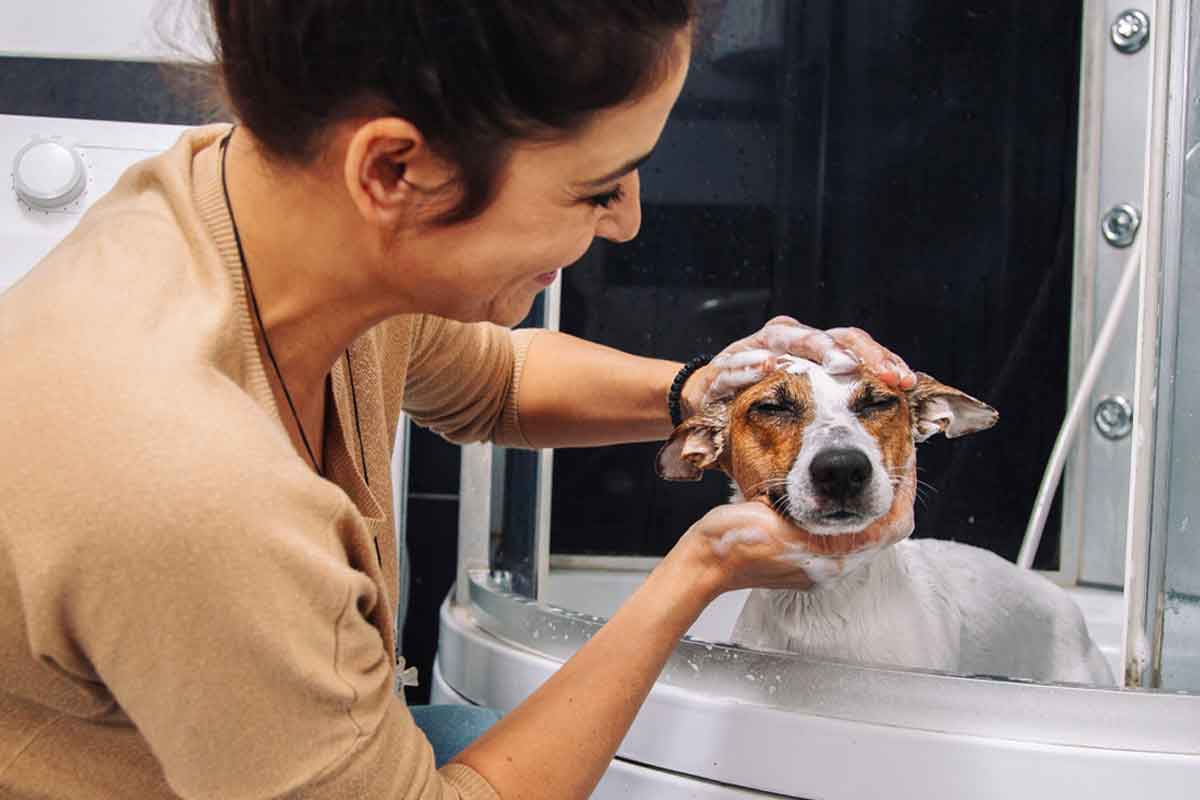Keeping a dog clean is about more than just making them look good—it plays a crucial role in their overall health and well-being. Dog bathing helps maintain skin health, prevents infections, reduces shedding, and keeps unpleasant odors at bay. While some dogs may not require frequent baths, regular grooming and hygiene practices ensure that their coat stays in optimal condition.
Understanding the right bathing routine, choosing appropriate products, and knowing how to handle different coat types can make bath time a positive experience for both dogs and their owners. This article explores the benefits of regular dog bathing, best practices, and how proper hygiene contributes to a healthier pet.
Why Regular Dog Bathing is Essential
Bathing is an important part of pet care, as it helps maintain cleanliness and addresses common skin and coat issues.
1. Removes Dirt, Debris, and Allergens
- Dogs encounter dirt, pollen, and bacteria daily, which can accumulate on their fur and skin.
- Regular baths help remove allergens that can cause itching and irritation.
- Clean coats prevent unpleasant odors and keep the home environment fresh.
2. Prevents Skin Infections and Irritation
- Unwashed fur can trap bacteria, leading to hot spots or fungal infections.
- Bathing removes excess oil buildup that may cause clogged pores or acne.
- Dogs with skin conditions benefit from medicated shampoos that soothe irritation.
3. Reduces Shedding and Keeps the Coat Healthy
- Brushing and bathing help remove loose fur before it spreads around the home.
- Regular baths distribute natural oils, keeping the coat shiny and soft.
- Proper hygiene minimizes matting in long-haired breeds.
4. Controls Fleas and Ticks
- Bathing can help wash away parasites before they become a bigger problem.
- Flea and tick shampoos provide extra protection against infestations.
- Regular checks during bath time help spot early signs of pests.
5. Improves Overall Hygiene and Comfort
- Clean dogs are more comfortable, especially in warmer weather when sweat and dirt can cause discomfort.
- Dogs that are regularly bathed are less likely to develop unpleasant odors.
- Routine baths help prevent buildup of dirt in sensitive areas like paws and ears.
How Often Should a Dog Be Bathed?
The frequency of dog bathing depends on the breed, coat type, and lifestyle. Some dogs need more frequent baths, while others require only occasional cleaning.
1. Short-Haired Breeds
- Dogs with short coats, such as Beagles and Boxers, typically need a bath every 4-6 weeks.
- Their fur naturally repels dirt, requiring minimal maintenance.
2. Long-Haired Breeds
- Breeds like Golden Retrievers and Afghan Hounds require more frequent grooming, with baths every 3-4 weeks.
- Regular brushing helps maintain coat health between baths.
3. Dogs with Skin Conditions
- Some dogs require special shampoos for allergies or sensitive skin.
- A veterinarian may recommend a bathing schedule tailored to specific needs.
4. Active or Outdoor Dogs
- Dogs that spend a lot of time outside or swimming may need more frequent baths.
- Mud, sand, and lake water can cause skin irritation if not cleaned properly.
Choosing the Right Products for Dog Bathing
Using the correct shampoo, dog grooming brush, and other grooming products is essential for maintaining a dog’s coat and skin health.
1. Dog-Specific Shampoos
- Human shampoos are too harsh for dogs and can disrupt their skin’s pH balance.
- Hypoallergenic shampoos are best for dogs with sensitive skin.
- Oatmeal-based shampoos help soothe irritation and dryness.
2. Flea and Tick Control Shampoos
- Medicated shampoos help manage parasites but should be used as directed.
- Regular use can support other flea and tick prevention methods.
3. Moisturizing Conditioners
- Conditioners help prevent dryness, especially in breeds prone to flaky skin.
- Coconut oil or aloe-based formulas add extra hydration.
Best Practices for a Stress-Free Dog Bathing Experience
Bathing can be an enjoyable experience if done correctly. Creating a positive routine helps dogs associate bath time with relaxation rather than stress.
1. Prepare the Bathing Area
- Use a non-slip mat in the tub or sink to prevent slipping.
- Have towels, shampoo, and brushes ready before starting.
- Ensure water temperature is lukewarm to avoid discomfort.
2. Brush Before Bathing
- Removing tangles and loose fur helps water and shampoo reach the skin.
- Brushing also prevents mats from tightening when wet.
3. Apply Shampoo Gently
- Massage shampoo into the coat using circular motions.
- Avoid getting soap in the eyes and ears.
- Rinse thoroughly to prevent residue buildup.
4. Dry Properly
- Towel-dry first, then use a pet-safe blow dryer on low heat if needed.
- Avoid leaving a dog damp, as it can lead to skin infections.
- Brush the coat after drying to maintain smoothness and shine.
Common Mistakes to Avoid When Bathing a Dog
Even well-intentioned grooming sessions can go wrong if certain mistakes are made.
1. Bathing Too Often
- Over-bathing strips the coat of natural oils, leading to dryness and irritation.
- Stick to a schedule that balances cleanliness with skin health.
2. Using the Wrong Products
- Strong detergents or human shampoos can cause allergic reactions.
- Always choose gentle, pet-friendly formulas.
3. Skipping Ear Protection
- Water in the ears can lead to infections.
- Using cotton balls or a dry cloth can help keep ears dry.
4. Rushing the Process
- Bathing should be a calm experience; rushing can increase anxiety.
- Taking time to reassure and reward the dog makes future baths easier.
Professional Dog Bathing Services
While at-home bathing is essential, professional dog bathing services offer additional benefits, including:
- Deep cleaning with high-quality shampoos and conditioners.
- Specialized treatments for skin conditions or excessive shedding.
- Nail trimming, ear cleaning, and coat conditioning for overall hygiene.
Pet owners who prefer expert care can visit facilities like Karnik Pet Lodge at Maple Village, where trained professionals ensure a thorough and stress-free grooming experience.
Conclusion
Regular dog bathing is essential for maintaining skin and coat health, preventing infections, and keeping pets comfortable. A well-maintained bathing routine removes dirt, allergens, and excess oils while improving hygiene and reducing shedding.
By using the right products, following best practices, and ensuring a positive experience, dog owners can keep their pets looking and feeling their best. Whether bathing at home or seeking professional services, proper grooming is a vital part of responsible pet care.
Read more from reviews



































